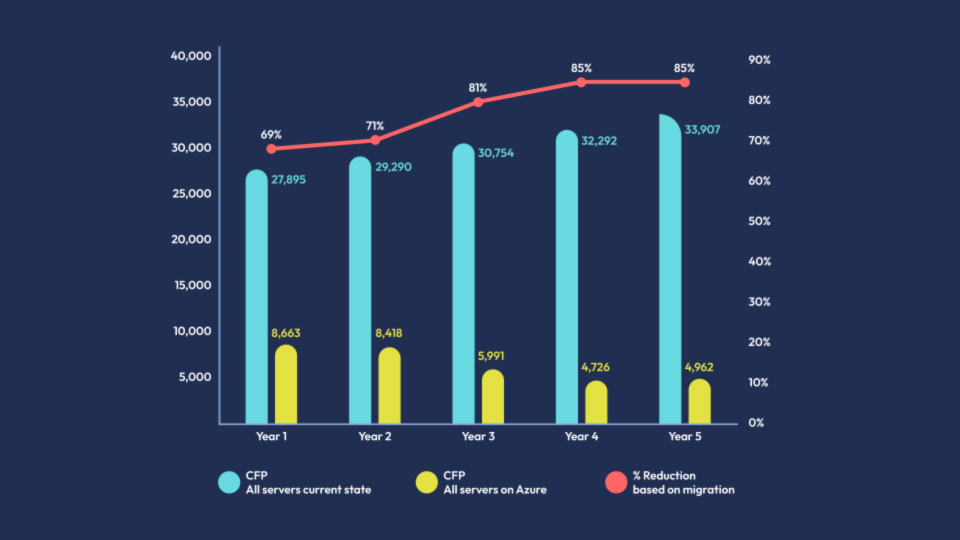Get Insights from our Healthcare Industry Lead, Stefan Pilipovic.
Reasons for migrating to Cloud
Having worked with the NHS as a trusted partner for seven years, with the aim of moving Healthcare organisations into the cloud, I have experienced a variety of plans and methodologies which have successfully moved national-scale applications right through to migrating entire data centres into the cloud. The reasons for migrating to cloud vary and having been tasked with leading discovery option papers for a variety of environments, I want to share with you the most common ones:
1. End of Life & End of support hardware and applications
With the NHS now having to consider a cloud option upon refresh, end-of-life and end-of-life support are the age-old compelling events for a migration into the cloud… Due to the complex nature of NHS Data Centres and application estates, and the lack of information around the dependencies of applications across databases and server infrastructure.
One of the biggest obstacles I have encountered is the complex nature of NHS Data centres and application estates and the lack of information around the dependencies of applications across the databases and server infrastructure.
2. Raising Utility Costs
This year especially raising utility costs has become a hot topic. Speaking to a CIO I was informed that their electricity usage for running their DC estate per annum is nearing the £3 Million mark, this has prompted the said trust to start assessing their options for moving full scale into the cloud as the running costs are considerably less.
3. Sustainability
NHS Property Services announced that the NHS is aiming to be carbon neutral by 2040, making NHS Data Centres a massive priority to move into the cloud over the coming years, and in my experience, these should be a priority for reducing carbon emissions.
A good example of this is a recent assessment I have done with one of my customers where this was a focus, by migrating their two data centres, which had approximately 600 servers, we found that over five years there was an 85% reduction in their IT estate carbon footprint vs staying on-premises.

4. One version of the truth
NHSEI led by Ming Tang has been breaking ground regarding creating one version of the truth on a national scale, working on UDAL which is evolving further into the “federated Data platform project” with use cases focusing on:
- Population health and personal insight
- Care coordination (with focus on ICS)
- Elective recovery (with focus on trusts)
- Vaccines and immunisation
- Supply chain
At a regional and local level for ICB’s and secondary and primary care the requirements for modern data platform technologies are becoming a strong trend to enable these organisations to make decisions and predictions at a local and regional level using data.
5. Interoperability
With ICB’s becoming statutory bodies a key requirement across regions is Interoperability. This is an age-old problem for the NHS which uses a variety of different applications for clinical requirements which aren’t one size fits all.
The benefits of successfully delivering an interoperable health and care system are huge:
- Improved patient safety through reduced errors
- Facilitates the delivery of integrated care by making the right information available at the right time
- Creates a thriving and innovative health tech sector with usable apps and products
- people are able to access their own information and support the use of data for population health, policymaking and research.
By ensuring interoperability across systems, we avoid delays in diagnosis, prevent tests from being repeated unnecessarily, and speed up the process of starting people on the correct treatment and care. This transforms care provision by giving permitted staff instant access to people’s care records and makes it easier for people to move between care settings.
The cloud provides a platform to drive interoperability across an entire region a good example of this is the work Healthier Lancashire and south Cumbria ICB have done with the LPRES program, which has led to clinicians being able to share documentation and results across all the trusts in the region.
Right cloud migration tools to use
I have spoken about some of the compelling reasons why the health sector is moving into cloud, but one of the most common questions I face is how do I do it?
The best place to start is by selecting the right tooling. Over the years I have worked with ANS’ Solution Architect on a variety of different cloud migration tools and in my opinion, these are the best ones to use if you are looking to get the crucial information you need to create a business case for migrating to cloud:
Azure Migrate
The Azure Migrate tool is in my opinion is the best tool for you to understand if your applications, servers, and databases can move into the cloud. Typically, the answer is always yes however if you are looking for a comprehensive 6 R’s assessment for moving into Azure you would need an experienced Solution architect and extensive workshops with application owners to understand the dependencies of your applications.
Movere
The Movere tooling provided by the Microsoft assessment team is our tool of choice when we engage with our customers. This assessment provides detailed costings for the migration of servers into Microsoft Azure. We also run customer workshops alongside this assessment in order to produce an accurate costed business case for migrating into the cloud while also being able to produce a 6 R’s assessment of our customer applications estate where we can provide a transition plan.
Cloud Sphere
The Cloud Sphere tool can be provided by the Microsoft assessments team. It will give you a detailed 6R’s report of your applications estate and provide visualizations of each of your applications, all provided in an easy-to-use and navigate GUI based in your web browser.
This tool is quickly becoming my tool of choice because of the level of detail it provides us when we are writing our reports.
Summary
I have given my opinion on the compelling reasons to move to cloud from my experience of working with a variety of healthcare organisations and some of my tools of choice when planning a migration into the cloud. If you’d like to understand ANS’ approach to planning a migration to cloud, please visit our Cloud migration page or get in touch.





